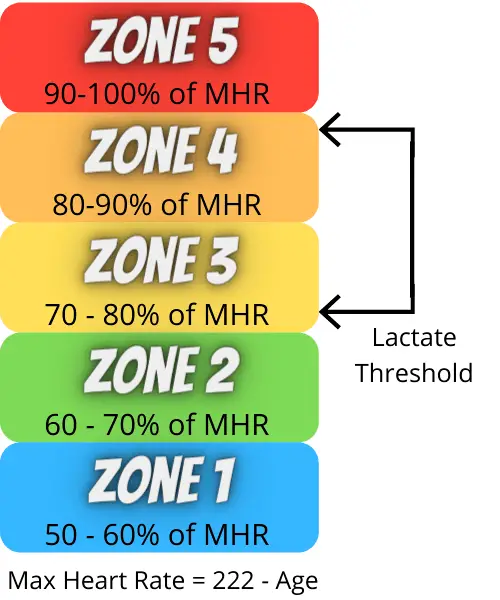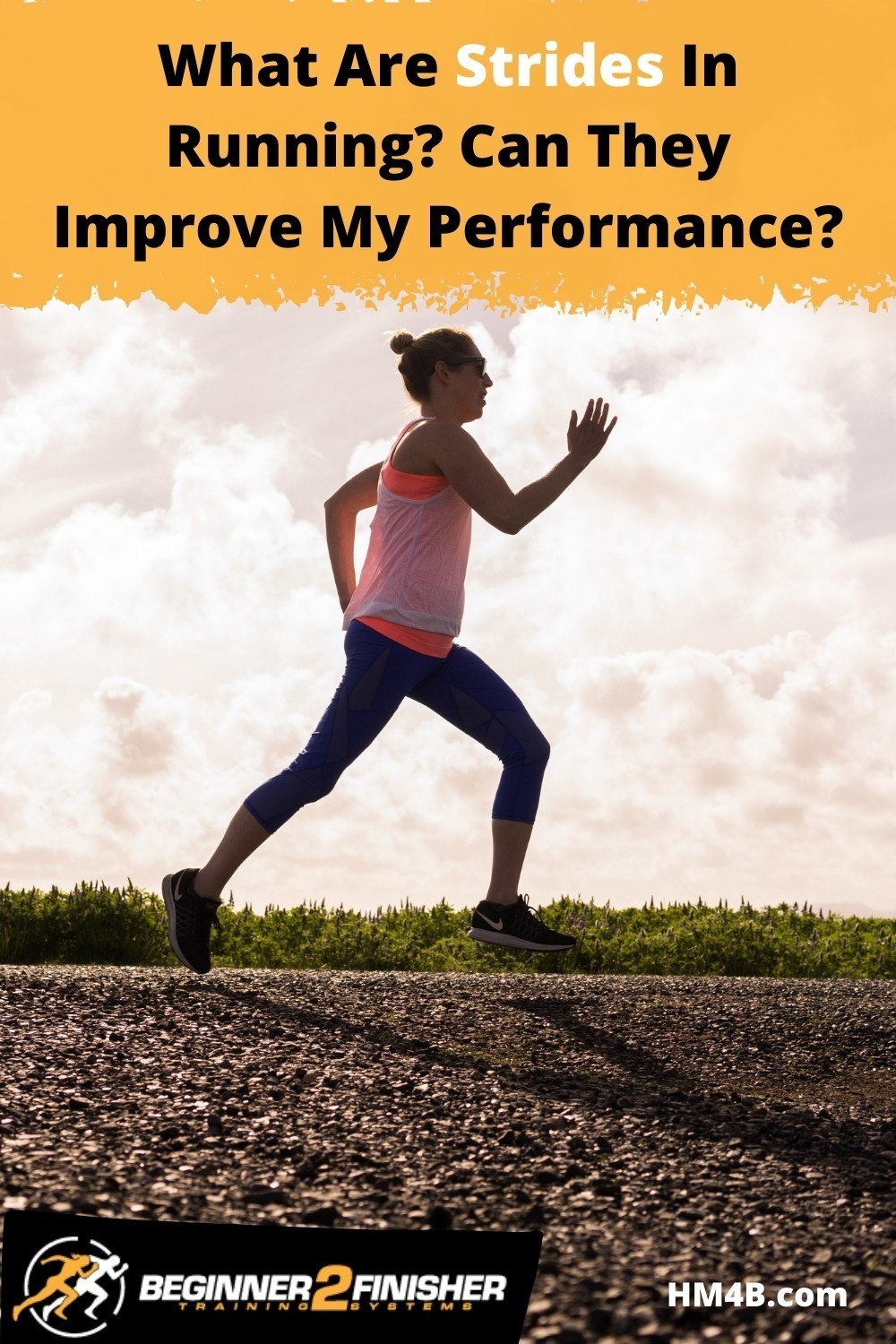What are strides?
What Are Strides in Running? Strides are around 100m accelerations where you start by jogging and build up your speed to about 85 to 95 percent of your maximum speed. After that, you will gradually decrease your speed to a stop. The duration of a stride should be between 20-30 seconds, depending on your fitness.
Strides Vs. Sprints
If you’re making a sprint, you will go flat-out for as long as possible. Sprints are generally maximum effort, but you should limit them to a maximum of 50 to 100 meters.
Strides are when you accelerate for around 100 meters until you hit your 5k pace around two-thirds of the way into the run. Sprints are maximum effort, but strides tend to be 85 to 95 percent, and you should be able to hold the stride pace for two to four minutes.
Should new runners perform strides?
Strides are great for runners of all experiences and abilities. The great benefit of strides is implementing them into easy runs, and strides are great for improving a beginner’s base mileage and learning how to run faster.
Also, strides are great for beginners because you’re not going at the maximum pace. When you’re a beginner runner, you should avoid going at a full pace until your joints are ready and you have conditioned your muscles.
When should you use strides in training?
There are various options and ways to incorporate strides into your training. All the options have different benefits, and they all suit different training goals. You could implement all of these options into your weekly training routine.
Strides after your long runs
If you’re doing a long run at a comfortable pace – zone one to zone two heart rate – you should implement strides at the end of your workout. You should complete the strides at your 5k running pace for a maximum of 20 seconds.

Using strides at the end of a long run will teach your body to maintain good running form. Also, it will help you retain cadence at the end of a race. The main focus should be on maintaining good running form during the strides.
Furthermore, doing strides at the end of a long run could help recovery after a long steady session.
For a more detailed post about running form including variations due to terrain changes check out:
Proper Running Form on flats, hills, ice/snow, sand, and trails
Strides After You Warm-Up
A great option is to implement strides straight after your warm-up. They are excellent before you start your speed session, including a tempo run, mile reps, and an interval workout.
When you’ve completed your regular warm-up routine, you should begin strides to prepare yourself for the high-intensity speed running that is about to start. A great option is to perform sets of 20-30 accelerations between 85 to 95 percent of your maximum heart rate. These strides will help you warm up your legs and get your stride length perfect.
Complete strides as its own session
If you’re running out of time, you’ve had a busy week, and you’ve not been able to maintain a good training session during the week – a stand-alone session of strides could be an excellent option for you.
It would be best if you warmed up in the same way you would warm up for a regular speed workout. After the warm-up, you should perform around 6 to 12 sets of strides that range from 20 to 45 seconds.
When you’ve finished your session of strides, you should complete a slow recovery walk or a calm zone 1 run to reduce any DOMS the next day.
Related: Can I run if my legs are sore (DOMS)?
Differences/similarities between strides and sprints
A difference between sprints and strides is sprinting is maximum effort, and strides are between 85 and 95 percent of your maximum effort. Many runners describe strides as short easy sprints.
When you sprint, you should go all-out for as long as you can maintain the maximum pace. But, you should limit your sprints to a maximum of 50 to 100 meters, or you’re training to maintain speed over time instead of increasing it.
Runners directly use sprints for building speed, whereas runners use strides to ease muscle stiffness, prepare you for more fast training, and help you to warm up before a workout or race. It is possible to do strides as a warm-up, but sprints are something you wouldn’t use to warm up.
Related: What Is Polarized Training? Is The Mid-Run Finally Gone?
How often should you perform strides?
There is no perfect answer to this, and many runners have different opinions. Some runners will aim to perform strides after every long easy run to decrease muscular pain the following day. Some runners will incorporate them before any fast run, such as a 5K race, a tempo run, hill repeats, or any heavy internal training.
However, some runners will perform strides once a week as a stand-alone session if they are busy and don’t have the time to complete more extended runs. The amount of times that you perform strides is up to the runner.
Related: 11 Reasons Why Your Running Performance Isn’t Improving!
Common Running Stride drills
The first thing to do is ensure that you have an excellent spot to perform strides. Aim to find spots that are free of obstacles, and if you have a running track, a stretch of grass in the park, or a clear running trail, you should be ready to go.
Before a warm-up or a race
If you choose to run strides before a race or a speed workout, you should warm up first with 10 minutes of walking or very slow zone 1 jogging. If the run is a race, you should time the strides, so you finish them two minutes before your race starts.
Running strides at the end of a long run
Running strides at the end of a run is very common. You should walk for a couple of minutes after you stop running to bring your heart rate down. After you’ve got your heart rate down, you should complete strides between 4 to 8 times, depending on your experience.
How to run strides on a treadmill?
It would help if you started by running at a comfortable, leisurely pace, around 60 percent of your maximum HR. Then, increase the treadmill’s speed slightly above your 5km pace; as the treadmill speed increases, so will your running rate. Continue running for 20 to 30 seconds and then slow back down to an easy pace and repeat.
What are the benefits of running strides?
One of the biggest benefits of running strides is that you never reach an anaerobic state and stay alactic (without lactate buildup).
There are many benefits from running strides. One of the main benefits is the ability to warm-up your muscles and joints before a race to avoid injury. Strides elevate your heart rate, condition your muscles, and loosens your joints before you complete any speedwork.
Strides are also excellent for runners looking to aid recovery to stimulate blood in the legs without overworking the muscles. If you have completed a high-mileage or high-intensity run, strides are a great option the following day to help recovery.
Furthermore, if you’re a long-distance runner who runs in the lower HR zones a lot, strides are great for extra speed work.
What are the drawbacks of running strides?
Strides can stress the body because you’re running at zone 4-5 and 85 to 95 percent of your maximum effort. If you’re a brand new runner with poor conditioning – you might get injured completing strides.
Do Strides make you faster?
Strides are an excellent way to get faster without going at the maximum effort. If you incorporate many strides, it can benefit your aerobic systems and increase speed for long and short-distance runners.
Are You New To Running?
Are you wondering where to start? Check out this Beginner Runner’s FAQ I pieced together:
References
https://www.runnersworld.com/training/a20803505/how-to-run-strides/
| Help support me and subscribe to my YouTube channel. YouTube video - 30 ways to make your runs less painful! Coach Scott's Credentials:
|
To sign up for a FREE half marathon training schedule, log sheet, and pace predictor CLICK HERE.

Recommended gear for runners
Connect with me:
| facebook.com/BeginnerToFinisher/ |



5 thoughts on “What Are Strides In Running? Can They Improve My Performance?”